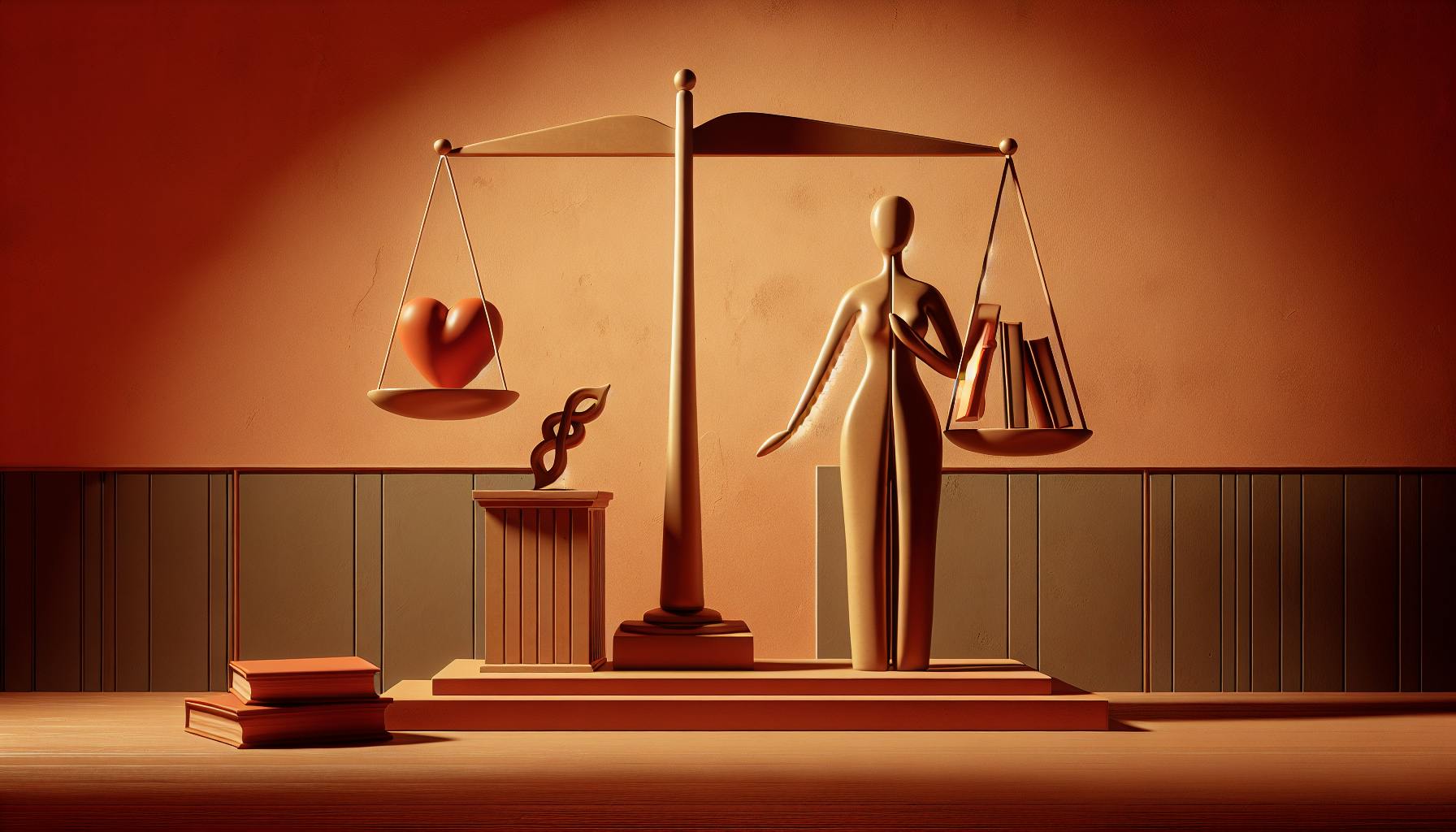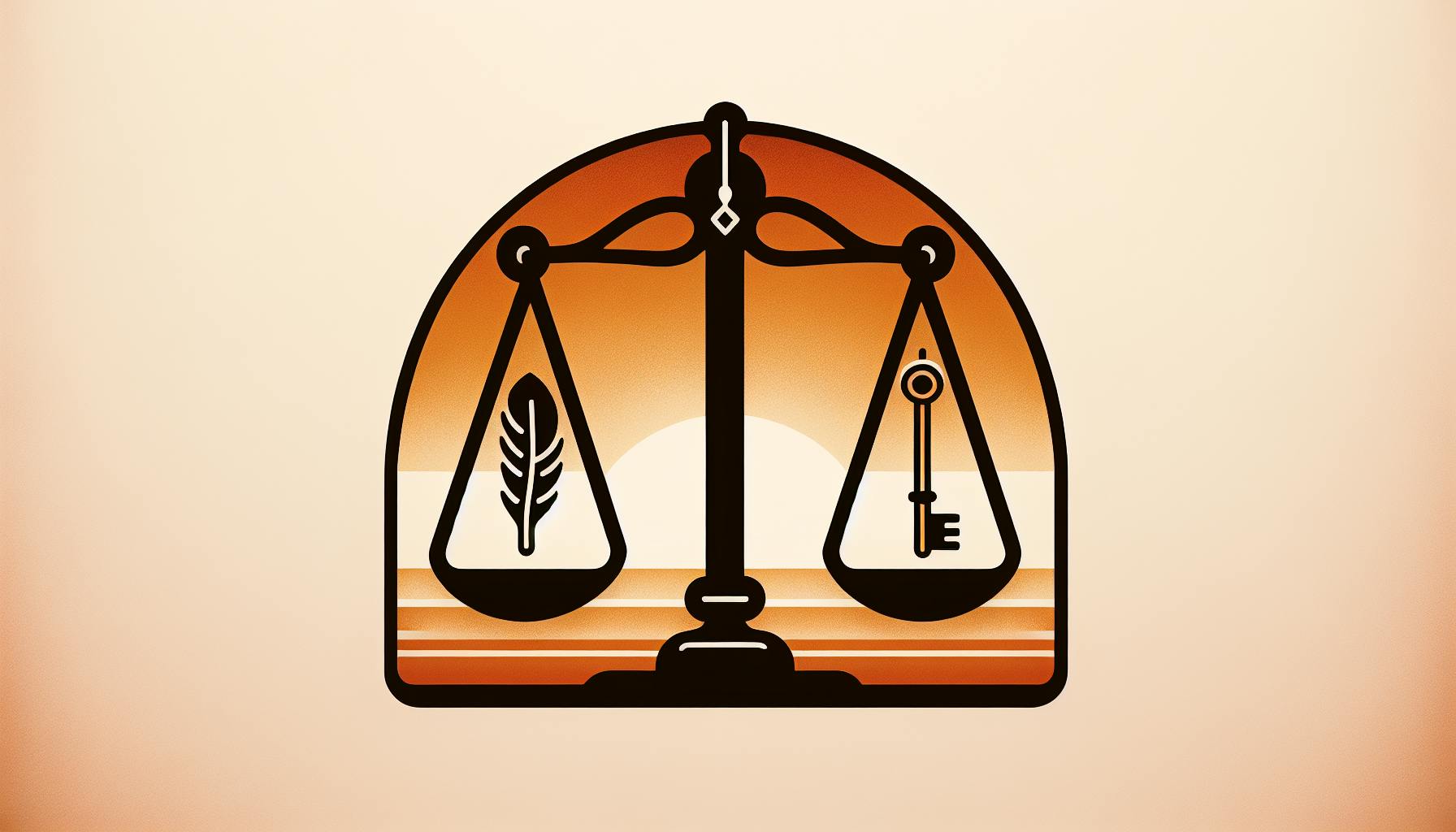We can all agree that censorship and restrictions on personal freedoms are concerning issues.
This article will provide an impartial examination of the Comstock Laws, their motivation and impact, without making value judgments.
We'll explore the origins of these controversial laws, their key provisions, legal challenges over time, and their gradual weakening, to understand their significance on issues like censorship and personal liberties.
Introduction to the Comstock Laws: Act of 1873
The Comstock Laws were a set of federal acts passed in 1873 under the Grant administration targeting materials deemed "obscene". This introductory section will provide background on the laws' origins, goals, key figures, and initial impact.
Origins and Motivation Behind the Comstock Act Passed
The Comstock Act was named after Anthony Comstock, an anti-vice activist who lobbied extensively for tighter obscenity laws. Comstock was driven by his strict moral views and desire to prevent the spread of materials he viewed as indecent or immoral, particularly those related to sexuality.
Key factors motivating the passage of the Comstock Act in 1873 included:
- Comstock's lobbying and influence with politicians
- Public calls for stricter morals and societal order post-Civil War
- Protestant Christian morality of the time
- Beliefs that "obscene" materials spread vice and immorality
The act ultimately passed with bipartisan support from moral reformers and religious figures.
Key Provisions of the Act of 1873
The key effects of the Comstock Act were to:
- Ban distribution of any "obscene, lewd or lascivious" materials, including information on contraception and abortifacients
- Grant the U.S. Postal Service more power to censor mailings
- Make it illegal to distribute said materials through the Postal Service
- Broadly define "obscenity" to include not just sexual content but contraceptive information
This greatly restricted information on birth control, abortion, and sexual health. The act also banned distribution of sex toys and related "erotic paraphernalia".
Initial Impact and Enforcement by the U.S. Postal Service
In the years after its passage, the Comstock Act led to:
- U.S. Postal Service confiscating huge volumes of books, newspapers, advertisements and more
- Thousands of arrests for distributing "obscene" materials from 1873 to 1913
- Lack of access to reproductive health information and products
- Chilling effect on free speech regarding sexuality
U.S. Postal Inspectors became more vigilant in censoring "obscene" mailings. This set the stage for decades of obscenity cases around books, ads and other materials involving sex.
What is the Comstock Act and what was its purpose?
The Comstock Act, officially known as the Act for the Suppression of Trade in, and Circulation of, Obscene Literature and Articles of Immoral Use, was a federal law passed by the United States Congress in 1873.
The law was named after its chief proponent, Anthony Comstock, who was a United States Postal Inspector and prominent morality crusader. The statute defined contraceptives as "obscene" and "illicit," making it illegal under federal law to disseminate birth control information or devices through the mail or across state lines. This included information about contraception and abortion.
At the time, the Comstock Act became the first federal anti-obscenity statute in the Western world. However, when it was first passed, the American public did not pay much attention to this new law. It was only later that the effects of the Comstock Act became more widely felt, as the prohibition on spreading information about birth control through the mail hampered efforts of activists to increase public knowledge and availability of contraception.
So in summary, the purpose of the Comstock Act was to outlaw the circulation of materials and information related to contraception and abortion, which were deemed "obscene" under the law. This made it much harder for people to access birth control.
What was the result of the Comstock Law?
Over time, the Comstock Laws were enforced less strictly. By the mid-20th century, courts reached a consensus that the Comstock Act could not be enforced against anyone who mailed banned material or information, unless the sender knew the materials were intended to be used unlawfully.
This reflected changing social attitudes and legal interpretations around issues of obscenity and contraception. Challenges to the Comstock Laws in cases like United States v. One Package of Japanese Pessaries in 1936 helped establish that doctors could legally mail contraceptives. Landmark cases like Griswold v. Connecticut in 1965 found bans on contraceptives for married couples unconstitutional on privacy grounds.
So while the Comstock Laws stayed on the books for decades, their practical impact waned over time. The laws were significantly weakened through court rulings and changing social norms around sexuality and reproductive rights. This paved the way for major advances in access to birth control and overturning of obscenity standards in later decades.
Which of the following did the Comstock laws make illegal?
The Comstock laws, which were a set of federal acts passed in the late 1800s, made it illegal to send a number of items and information through the U.S. mail. Specifically, the Comstock laws criminalized sending the following through the mail:
- Obscenity - This included erotic content, images, books, etc.
- Contraceptives - Such as condoms, diaphragms, spermicides, etc.
- Abortifacients - Substances intended to induce abortion.
- Sex toys
- Personal letters with sexual content
- Information about contraceptives or abortifacients
The Comstock laws allowed postal inspectors to confiscate these prohibited materials from the mail. The laws also banned importation of contraceptives and the advertisement of abortion services.
These restrictions reflected moral attitudes of the time period and were aimed at preventing access to "obscene" materials as well as limiting birth control options. The laws had a chilling effect and forced reproductive health information and devices underground. Many of the Comstock laws were eventually repealed or struck down by court rulings in the mid-1900s.
sbb-itb-e93bf99
Is the Comstock Act unconstitutional?
The Comstock Law, passed in 1873, made it illegal to send "obscene, lewd, or lascivious" materials, including information about contraception, through the mail. This interfered with people's ability to access birth control and was seen as an infringement on the right to privacy.
In 1965, the Supreme Court case Griswold v. Connecticut found that the Comstock Law was unconstitutional because restricting access to birth control violated a couple's marital privacy. This set an important precedent protecting privacy rights. The case struck down the Comstock Laws on the grounds that the government cannot interfere with a couple's right to marital privacy by restricting access to contraception.
This landmark Supreme Court decision in 1965 ruled that the Comstock Law violated the right to privacy as implied in the due process clause of the 14th amendment. By deeming restrictions on access to birth control unconstitutional, the court set a precedent protecting reproductive rights that paved the way for expanded access to contraception and greater reproductive freedom.
Legal Challenges and Changes to Comstock Laws
Early 20th Century Opposition by Advocates Like Margaret Sanger
In the early 1900s, opposition to the Comstock Laws began to increase, led by advocates for women's reproductive rights and access to contraception. Margaret Sanger, the pioneer of the birth control movement in the United States, actively campaigned against the Comstock Laws, seeing them as an infringement on civil liberties and women's rights.
Sanger founded organizations like the American Birth Control League and the National Committee on Federal Legislation for Birth Control to lobby for the repeal or amendment of the Comstock Laws. She specifically took issue with the laws prohibiting dissemination of information and devices related to contraception.
Other advocates like Mary Ware Dennett also challenged the Comstock Laws by distributing pamphlets on birth control through the mail in violation of the laws. Their civil disobedience and legal battles brought growing attention to the overreach of the Comstock Laws.
Supreme Court Cases and Repeals
Several landmark Supreme Court cases in the 1960s began to overturn parts of the Comstock Laws on grounds that they violated Constitutional rights.
The 1965 Griswold v. Connecticut case ruled that the Comstock Laws went too far in restricting married couples' access to contraception, violating marital privacy rights. This set a precedent for a right to privacy around reproductive health matters.
In 1972, the Eisenstadt v. Baird case extended the Griswold ruling to unmarried persons' access to contraception, preventing states from prohibiting or restricting access. This further eroded the legal standing of the Comstock Laws.
While the Comstock Laws officially remained on the books, these cases gutted much of their substance and impact. Most components of the law prohibiting dissemination of contraceptive information and devices were effectively nullified.
Limiting of Postal Authority and Jurisdiction
An important 1936 legal case, United States v. One Package, also helped overturn use of the Comstock Laws to restrict transport of contraceptives.
The case ruled that the federal Comstock Laws could not be invoked to prevent physicians from mailing contraceptives across state lines. This significantly curtailed the postal service's ability to enforce the federal Comstock Laws on contraceptive-related obscenity charges.
Over time, through advocacy, legislation, and court cases, the overreaching censorship and restrictions originally imposed by the Comstock Laws were gradually peeled back. The laws ultimately failed to stem the rising tides of reproductive rights and sexual freedoms through the 20th century.
The Significance of the Comstock Laws on U.S. Law and Society
Censorship and the Evolution of Obscenity Standards
The Comstock Laws set a precedent for censorship and obscenity standards in the United States. By criminalizing materials related to contraception and abortifacients, the laws established a strict definition of "obscenity" that equated reproductive health information with pornography.
This paved the way for future censorship campaigns targeting materials deemed inappropriate or immoral, from literature to film and beyond. Over time, the legal interpretation of obscenity evolved through court cases like Roth v. United States and Miller v. California, which established the "Miller test" still used today to determine if something qualifies as obscenity under the law.
So while the Comstock Laws represented some of the harshest anti-obscenity statutes in U.S. history, they sparked ongoing debates about censorship and freedom of speech that continue shaping legal standards for obscenity.
Impact on Birth Control and Women's Rights
By prohibiting distribution of contraceptives and abortifacients, the Comstock Laws dealt a major blow to efforts promoting birth control and reproductive rights for American women.
Access to contraception allowed women more control over family planning decisions. By taking this away, the Comstock Laws represented a paternalistic attempt to regulate female sexuality and autonomy. This aligned with Anthony Comstock's views on limiting women's rights and participation in public life.
The laws specifically targeted activists like Margaret Sanger who distributed birth control information despite legal bans. It would take decades of advocacy before contraceptives became legal and accessible nationwide in the 1960s and 70s.
So while the Comstock Laws sought to legislate morality regarding sexuality and reproduction, they ultimately impeded women's rights and health freedoms. Their repeal was a milestone in promoting reproductive autonomy.
Gradual Weakening and Eventual Repeal of Legal Standing
In the early 20th century, social values began shifting as public opinion no longer widely supported the severe morality-based censorship behind the Comstock Laws. High profile obscenity cases demonstrated the overly broad reach of the laws, which banned literary classics like Ulysses alongside contraband.
This eroded justification for the harshest aspects of the Comstock Laws. Piecemeal legal changes like lifting the federal ban on contraception gradually limited their scope. By the 1950s and 60s, the laws retained little legal footing or public support.
The Comstock Laws were symbolically laid to rest when the last remnants still present in Federal law were repealed in 1970. This demonstrated the laws no longer aligned with societal norms or constitutional freedoms decades after being implemented.
So while the Comstock Laws once wielded tremendous influence over American censorship standards and reproductive policies, evolving legal and ethical standards gradually stripped them of both relevance and legal standing over the 20th century. Their downfall traces changing attitudes toward sexuality, women's rights, and free speech.
Conclusion: The Comstock Laws in Retrospect
The Rise and Fall of the Comstock Regime
The Comstock Laws originated from Anthony Comstock's campaign against materials he deemed "obscene" in the late 19th century. As a postal inspector and leader of the New York Society for the Suppression of Vice, Comstock lobbied for strict censorship laws banning content related to contraception, abortion, and more. This led Congress to pass the Comstock Act in 1873, prohibiting mailing of "obscene" materials and empowering postal authorities to confiscate such content.
Over the next few decades, Comstock and his allies zealously enforced these censorship standards, leading to thousands of arrests. However, the early 20th century saw growing opposition. Advocates for reproductive rights like Margaret Sanger openly defied the Comstock Laws by distributing birth control information. Court rulings also increasingly undermined the laws' constitutional basis. This erosion of the Comstock regime culminated in key Supreme Court decisions in the 1960s overturning state bans on contraception as unconstitutional.
Lasting Impact on Censorship and Personal Freedoms
While no longer actively enforced, the Comstock Laws left a complex legacy. They demonstrated how moral crusaders could obtain expansive censorship powers through lobbying. The laws also shaped debates about "obscenity" and free speech for decades. However, by overreaching and provoking backlash from civil liberties groups, the Comstock regime ironically fueled campaigns to expand personal freedoms. This pushback established important legal precedents against state interference in private matters. So while the Comstock Laws imposed drastic censorship for nearly a century, their demise ultimately strengthened protections for reproductive rights and freedom of speech.


